
The Amazon Smart Thermostat can regulate your home’s temperature more efficiently, saving energy and money.
Amazon
The impact of climate change is more apparent with each passing year. Many of us want to live more sustainably, but it can be hard to know where to start. And with inflation on the rise, finding the money to make meaningful changes in our lives can be difficult.
Below, we’ve compiled eight tips to make your home more eco-friendly, from simple tricks to more involved changes. Best of all, most of them will save you money, too. For more money- and energy-saving tips, check out what to know about energy vampires, how to reduce your water bill, and the ideal temperature to set your thermostat year-round. Plus, Earth Day deals and discounts and how to recycle plastic the right way.
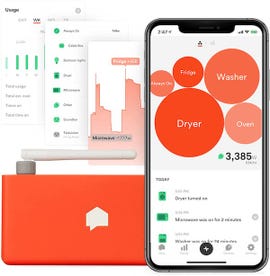
Sense alerts tell you when devices are on or off.
Sense
1. Install a power usage meter
With our love of gadgets and labor-saving devices, it’s easy to forget just how much juice they consume. The best way to get a handle on energy usage is an electricity monitor. You can instantly see the results of turning on your window AC or running the washing machine.
One device, the Sense home energy monitor, can be installed in your home electrical panel by an electrician in less than 30 minutes and gives real-time data on usage via a mobile app.
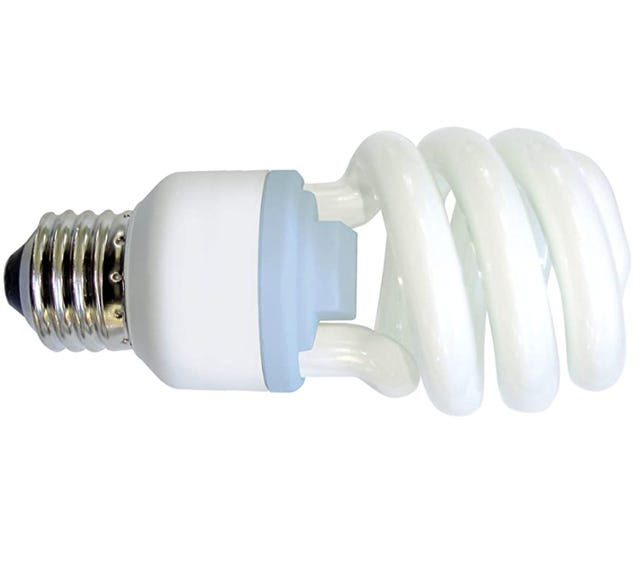
A GE Reveal compact fluorescent light bulb.
GE
2. Replace incandescent light bulbs
Lighting costs make up approximately 20% of all of the electricity used in the US. But only 10% of the energy used by an incandescent bulb is converted to light — the other 90% is lost as heat. (Not surprising for a device invented in 1879.)
Though they offer a similar amount of illumination, a compact fluorescent lightbulb uses 80% less power than its old-school counterpart. A 20-watt CFL generates about 1,100 lumens, the same light as a 75-watt incandescent. The price is higher (in the $10 range), but a CFL will last between 6,000 and 8,000 hours, compared with just 1,000 to 2,000 hours for an incandescent one.
Light-emitting diode bulbs are another energy-saving option: A 60-watt LED can set you back almost $25, but last up to 25,000 hours. In the long run that can work out to a savings of $100 through the life of the bulb.
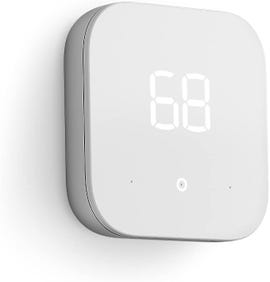
Amazon Smart Thermostat
Amazon
3. Invest in a smart thermostat
Smart thermostats can be programmed to regulate your home’s cooling and heat more efficiently than older manual models. Don’t need the heat going full blast when you’re asleep? Set your system to shut off at 3 a.m.
You can also program a smart thermostat via mobile app or even voice commands using Alexa, Google Assistant or Siri.
Some models come with a remote sensor that tracks ambient temperatures in certain rooms and can make that the default temperature. They can also determine when you are home or away, and adjust accordingly.
4. Put solar panels on your roof
There are a wide variety of panels on the market that deliver varying amounts of energy. The total volume of power you generate is determined by the number and size of panels installed and how many hours of sunshine they get in a day.
Most homes can’t rely on solar energy 100%, but many power companies allow homeowners to connect their panels to the local electrical grid — letting you to tap into it when you need and feeding extra energy you generate to the community when you don’t. In essence, you’ll get a discount on your monthly electricity bill.
It’s a major investment, to be sure: Starting costs for a 6-kW system can run from more than $13,000 to nearly $18,000. But the federal solar tax credit can slash up to 30% from the cost.
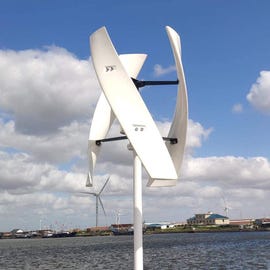
A 600w three-blade Ninilady vertical wind turbine.
Ninilady
5. Install a wind turbine
For those with a little more space, wind turbines can be a worthwhile addition. Unlike solar panels, they continue to generate power through the night.
There are numerous models on the market, suited to different locations, climatic conditions and budgets. As technology and design have matured, the size and power output of wind turbines has improved. It’s now possible to get models that take up little more space than a television antenna.
One modestly sized example is the 600-watt wind turbine from Ninilady, available for about $750 on Amazon. Its horizontal rotation and aircraft-wing design reduce noise, wind resistance and pressure — and with a blade diameter of just 0.6 meter, it can be mounted on your house or a freestanding pole.
6. Turn devices off at the wall
Many home appliances continue to draw energy, even when they’re turned off. Amounts vary, but many consume between 10 and 15 watts in standby mode. Add them up and it’s like leaving a few lights on 24 hours a day, seven days a week.
Some experts recommend physically unplugging your devices to save electricity, but it’s a lot easier to turn them off at the wall with a power board with its own on/off switch. They can also protect your appliances in case of a power surge.
If you have chargers plugged directly into the wall — for your phone, laptop or other rechargeable devices — be sure to unplug them when they’re not in use. Most continue to consume power regardless of whether your device is connected.
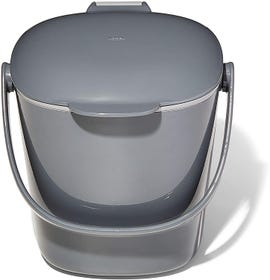
OXO Good Grips Easy Clean Compost Bin
OXO
7. Start composting
Composting is an easy way to lower your carbon footprint while creating rich fertilizer. A growing number of municipalities offer compost collection, alongside recycling and trash pickup.
But if your town doesn’t, there are lots of options for home composting — many of which can fit on your countertop. The Oxo Good Grips Easy Clean Compost Bin is a good option: Available in charcoal or white, it holds 12 cups of food waste in an attractive yet discreet container with a smooth interior and a lid that locks in any unpleasant odors.

The Energy Star program notes appliances that are more power-efficient.
Energy Star
8. Take an energy inventory of your appliances
Check your appliance’s label or instruction manual to see how much juice it consumes. Older model refrigerators, dryers and CRT televisions are notoriously inefficient and costly energy drains. It might be worth replacing one or more with a newer, more power-efficient model.
The Energy Star program was launched by the US Environmental Protection Agency and Department of Energy in 1992 to promote products that use less electricity. The program rates some 75 appliances, including washers, dryers, refrigerators, air conditioners, computer monitors and televisions.
How this determination is made is different for each category. For instance, refrigerators must be at least 15% more efficient than the minimum standard.
Read more: Earth Day Deals for 2022
